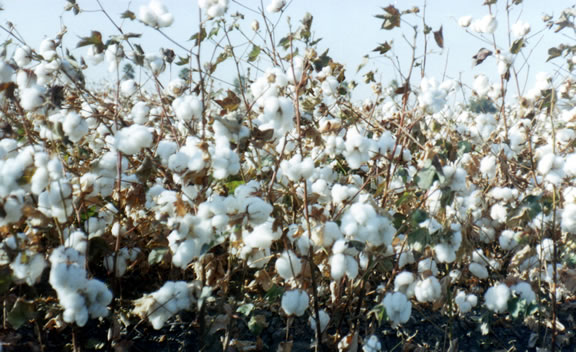
Agricultural News
Cotton Producers Need to Look Out for Unusual Pests This Crop Year
Thu, 09 Jun 2011 9:53:21 CDT
 The common pest, thrips, usually are not a serious concern for cotton producers but they could be for this crop season. Thrips can be a problem for cotton in years when favorable growing conditions permit early planting. Infestation of cotton plants can occur if the plants emerge before the maturity of wheat and other small grain plants.
The common pest, thrips, usually are not a serious concern for cotton producers but they could be for this crop season. Thrips can be a problem for cotton in years when favorable growing conditions permit early planting. Infestation of cotton plants can occur if the plants emerge before the maturity of wheat and other small grain plants.
Thrips first feed on the cotton plants at the beginning of their life cycle as larvae and then continue feeding on the plant after they mature into an adult. Feeding occurs on the lower side of the leaf and may damage the terminal bud, causing new leaves to fail to develop and stunt the growth. Producers should look for leaves that are crinkled and cupped.
There are various ways to control thrips. One of the most common ways is through foliar application products. Here are some tips for using foliar applications for thrips control from the Cotton Comments newsletter.
1. Timing is critical. Controlling thrips during the first 2 weeks post crop emergence appears to be the most important period; especially under cool conditions. You need to be "Johnny on the spot" with these applications when thrips are numerous; even a few days delay can be detrimental.
2. Avoid automatic treatments. Automatically adding a foliar thrips material in a Roundup application may not be necessary or may be poorly timed. Often either the weeds are not present when the thrips are or vice versa.
3. Scout for thrips. Go out and visually asses if thrips are present. Pull up plants and thoroughly search for them or beat the plants inside a plastic cup.
4. Do not spray based on damage. The damage you see today happened 3 to 5 days earlier and you may have already suffered yield loss. Spraying based on damage is essentially a revenge treatment.
5. Spray based on thresholds. Use an accepted action threshold to help you determine whether or not you should treat.
For more information how to prevent and treat the infestion of thrips in cotton fields, read the Cotton Comments newsletter below.
01704_CottonComments06092011.pdf
WebReadyTM Powered by WireReady® NSI
Top Agricultural News
More Headlines...



















